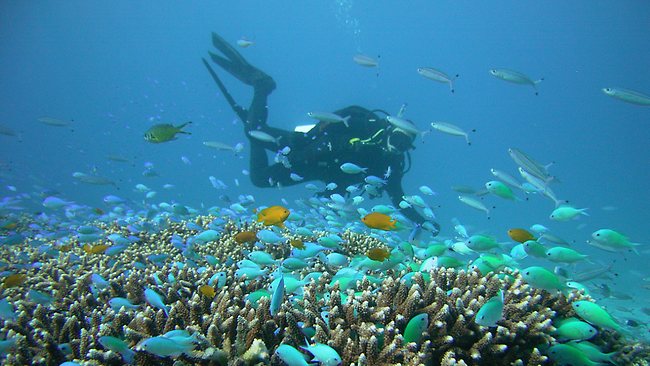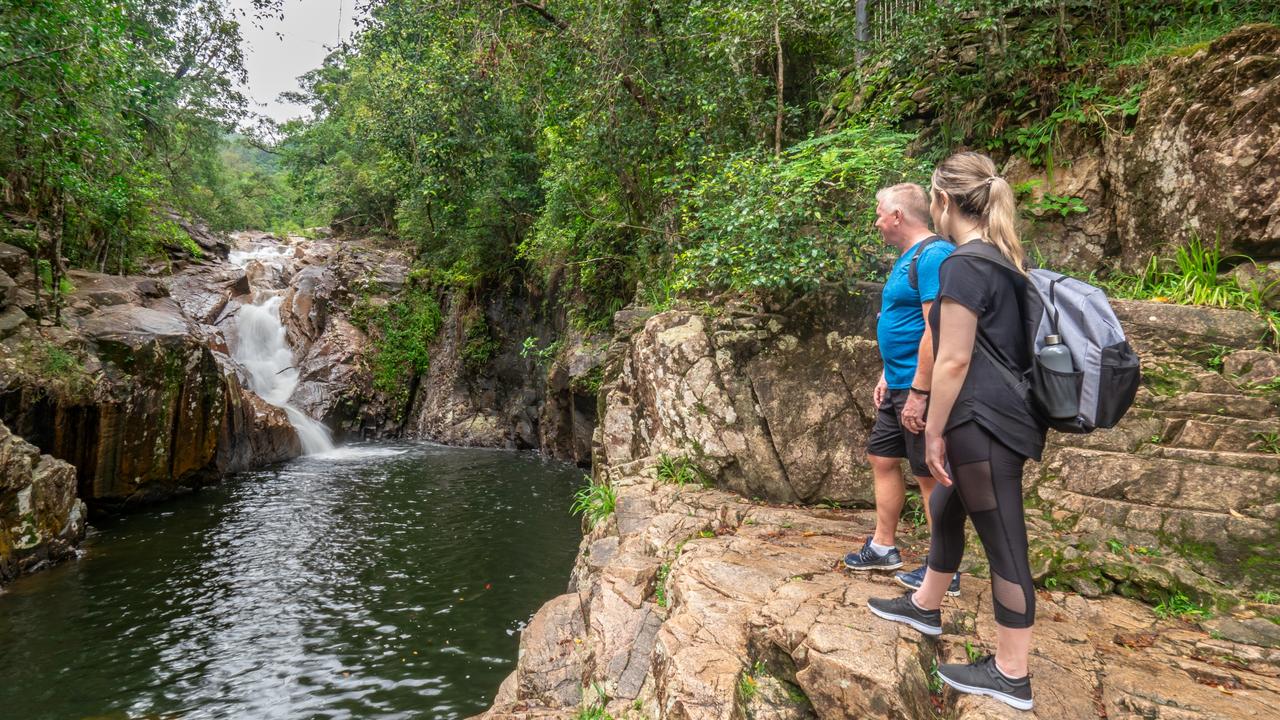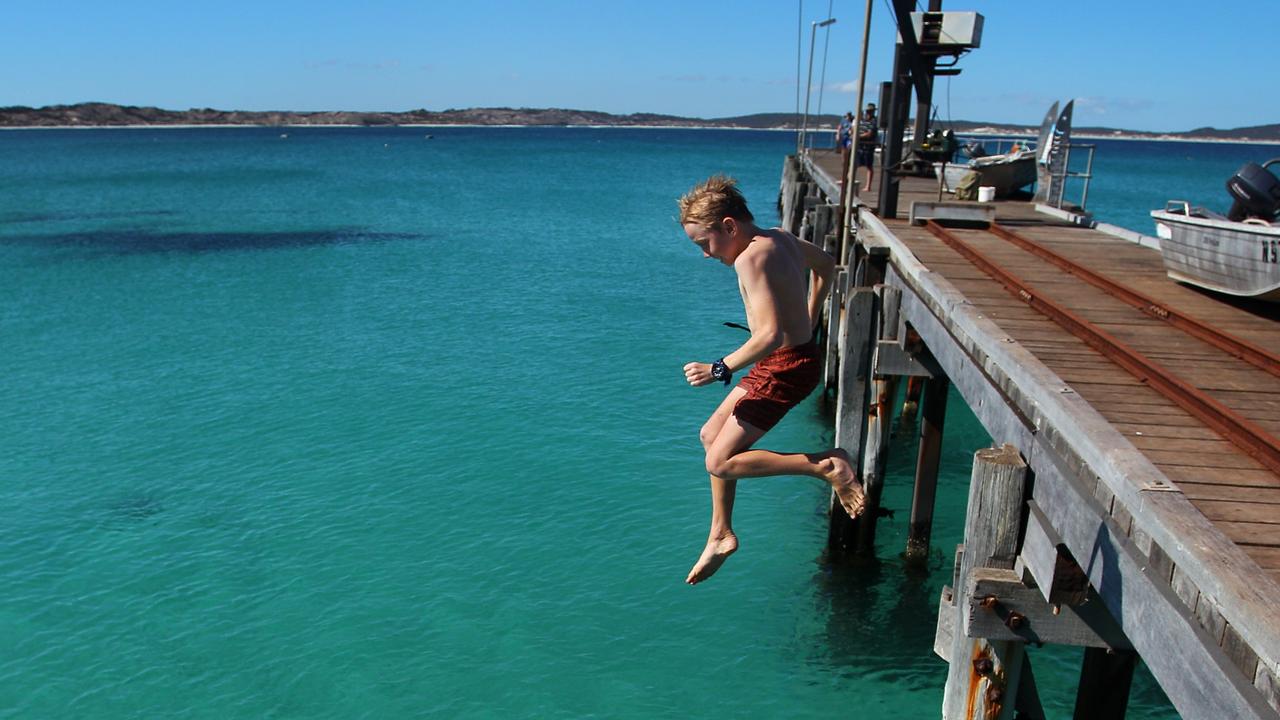Lady Elliot Island provides a welcome sea change
JUST 90 minutes from the Gold Coast you'll find huge schools of fish, green turtles, black and white manta rays and some of the world's best diving.

TAKE-OFF from Coolangatta airport - 6.30am. Landing at Lady Elliot Island on the Great Barrier Reef 8am. Swimming with turtles and giant manta rays in the island's coral gardens - 8.30am.
This is the stuff that dreams are made of, not only for busy home-grown holiday makers, but also time-poor visitors from tourism hotspots such as China who are trying to cram as many experiences as possible into their trip Down Under.
"The Gold Coast is the gateway to Queensland . . . and Gold Coast Airport is now No.5 in Australia and very busy for international travel," said Peter Gash, pilot and owner of Seair.
"That's very important for us because over 50 per cent of our visitors are international guests," said Gash, who is also the leaseholder of Lady Elliot Island Eco Resort, the southernmost island in the Great Barrier Reef, northeast of Bundaberg.
The island is ringed by spectacular reefs teeming with marine life, thanks to an absolute ban on fishing or taking anything from the surrounding waters.
The total protection has resulted in massive schools of huge fish, and green turtles which approach swimmers in the hope of having their shells scratched.
The rich ecosystem also attracts one of the ocean's wonders schools of enormous black and white manta rays with wingspans up to seven metres.
And all this, amid some of the best dive and snorkelling sites anywhere in the world, is just a 90-minute flight from the Gold Coast.
Manta rays flock to feed on the rich plankton belts around the island, forming one of the largest populations of the species on the planet, and while they congregate in their largest numbers during winter they are present throughout the year.
A University of Queensland study, Project Manta, has identified more than 450 of the majestic creatures living around the isolated coral quay.
Swimming with them can be a life-changing experience, and one which attracts people from around the world to Lady Elliot Island.
The mantas often line up in trains of 10 to 15 as they move in leisurely circles, feeding on the plankton streams.
The first hint of their approach is a flash of white in the crystal blue water before they appear like alien spacecraft from a movie, gliding silently towards you before sliding by, an arm's length away.
Another major attraction is the annual whale migration from June to October, with the massive humpbacks breaching and cavorting along the edge of the island's coral gardens in plain view from the shore.
Lady Elliot is also an active turtle hatchery with the mating season running from September to November, nesting from November to March and hatching from January to May.
And from September to March several hundred thousand birds nest on the island, which was reduced to a windswept wasteland devoid of life in the mid 1800s when up to two metres of guano, sea bird droppings, was stripped for use as fertiliser.
Gash has built on the work of previous tourism operators, intensifying efforts to restore growth of the native pisonia forest which once covered the island. "There was a very small stand of pisonia trees left on the island after the guano miners left in the 1860s and that survived and slowly propagated a few more," he said.
"We've helped encourage that, creating a pisonia nursery and planting them around the island under guidance of the Great Barrier Reef Marine Park Authority and Queensland Parks and Wildlife Service, replacing the forest and bringing it back to how it was 150 years ago."
He is also expanding the eco-resort's three-phase solar power station.
"We dream to be able to run the island entirely on renewable energy, and dreams become reality if you dream hard enough.
"The main platform will be solar power but I think we'll also have wind to help us because solar can only give us power during the day and it can't give it to us in bad weather, but wind can do it 24 hours a day. We've now reduced our unrenewable energy requirements by 70 to 75 per cent, and that last 25 per cent is going to be harder to get.
"We're investing a lot of money again this year in more solar batteries, more inverters and more solar panels and we hope to halve again our non renewable energy needs.
"We hope to have our diesel use down to less than 100 litres a day by the end of this year. The last 100 litres will be harder to get and that's probably where wind power will come in, but it will be new technology not huge propeller-driven wind generators.
"The target I set myself for total renewable energy use was 2015, and I think we're comfortably on target for that."
The writer was a guest of Lady Elliot Island and Gold Coast Tourism.
![]() Travel Tips: Queensland destination guide
Travel Tips: Queensland destination guide![]() Holiday ideas: Take a short break
Holiday ideas: Take a short break![]() Holiday deals: Aussie weekend bargains
Holiday deals: Aussie weekend bargains



